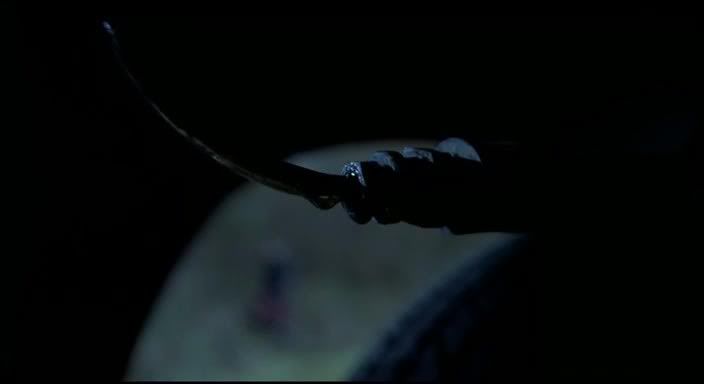
Blue, the first film in Krzysztof Kieslowski's Three Colors trilogy, is a gorgeous, understated film about the grief of a young woman, Julie (Juliette Binoche), after losing her husband and daughter in a car accident. It's a tender, quiet, meditative film, chronicling Julie's withdrawal from, and subsequent reemergence into, the world. The film is richly sensual, tracing the ways in which the sheer physicality of life draws Julie slowly, inexorably out of her introspective despair. In the devastating absence of those things that had previously given her life its meaning, Julie finds comfort and then a new kind of meaning in the sensual experience of the world, in the simple enjoyment of ice cream and coffee, in night-time swims at a pool of an unearthly deep blue, in the feel of golden sunshine warming her face on a nice day. Kieslowski experiences these things with Julie, luxuriating in the texture of coffee soaking up into a sugar cube or the crystalline blue of the wind chime ornament hanging in her room. It is a haunting, gentle film, driven as much by moods (and emotive classical music) as by incidents. Its plot meanders casually in the background, affecting Julie in quiet ways but never disturbing the film's surface calm.
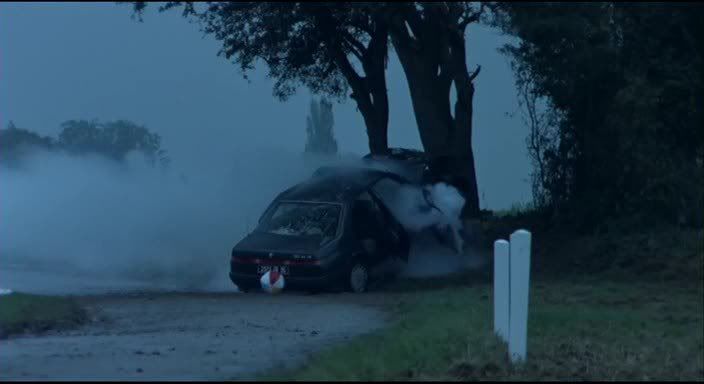

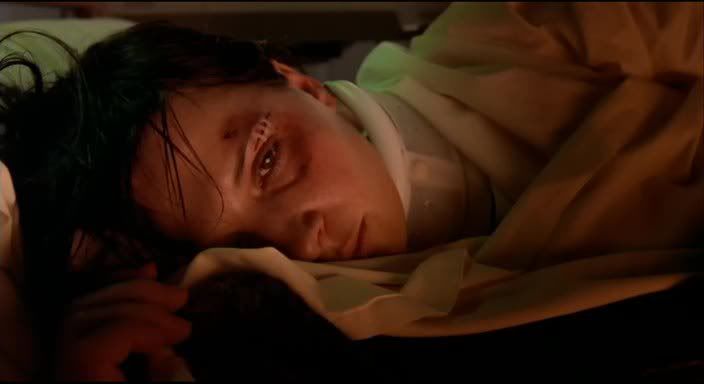


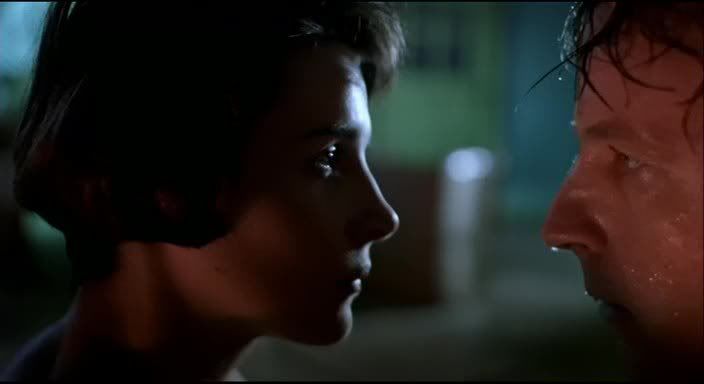
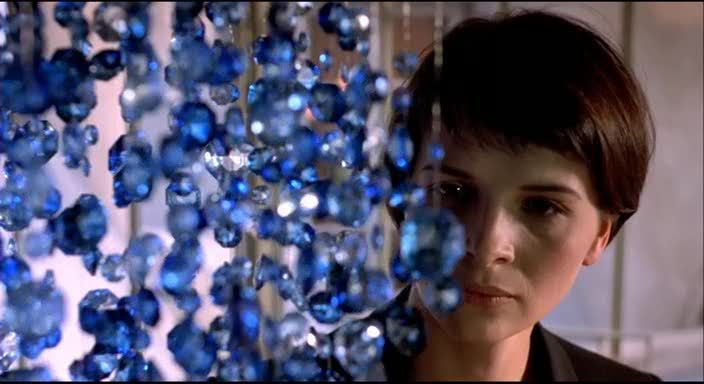


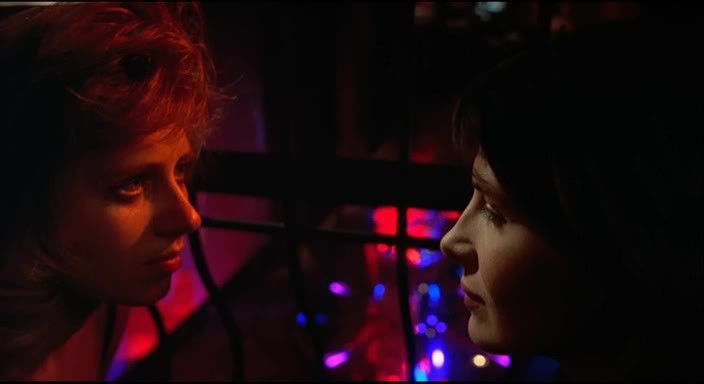

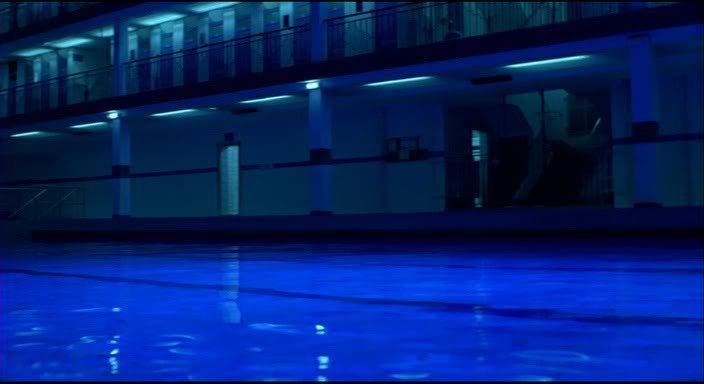

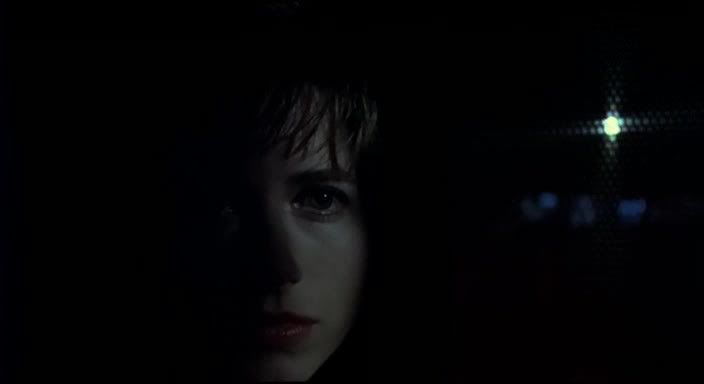
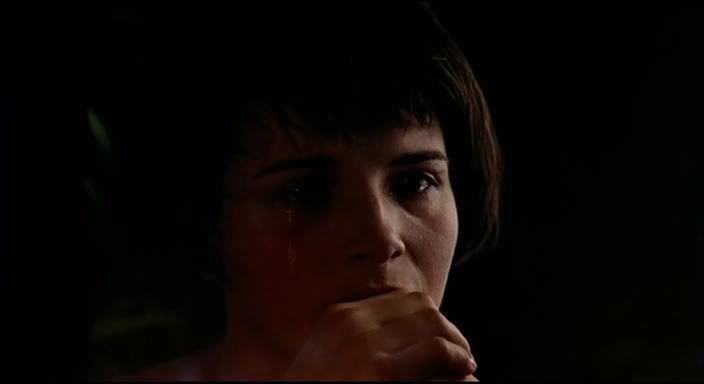
Well, this most assuredly belongs on any "Films that I Love" list, and even if I slightly favor the last piece of the trilogy RED, I do think this film borders on being a masterpiece. There is so much to revel in here. There are exquisite moments of visual poetry--the obvious usage of the color blue--but also sequences like the one where Julie hears her husband's music in her mind while swimming--the superlative use of blackouts--Juliet Bonoche's complete (extraordinary) immersion into character, and the 'humanity' that suffuses several scenes.
ReplyDeleteBut there is no question that Kieslowki is ably aided by two spectacular contributions here, by cinematographer Slavomir Idziak and composer Zbigniew Preisner. Idziak's incandescent use of color is sheer perfection, while Presiner's haunting score is one of the most beautiful in the history of cinema, launched by the sublime choral rendition of "Song for the Unification of Europe." and some piercing flute and piano work.
Wonderful capsule review:
"The film is richly sensual, tracing the ways in which the sheer physicality of life draws Julie slowly, inexorably out of her introspective despair."
Indeed.
This is the most stunning array of screencaps I have ever seen at Only the Cinema, and there has been some great ones here. But Idziak's sensuous palette and perfect modulation could yield no less.
I can't believe this came out in 1993. I saw the the second screening of the film in public [at a festival] and it really had an impact. I'm sure it still holds up.
ReplyDeleteI saw this trilogy last semester, when my school's international center hosted a screening of each film, one per week. Sadly, I was the only person who showed up to watch the last two films. I found them all mesmerizing, but Blue was my favorite.
ReplyDeleteThanks for the comments, all. Sam, very good point about the beauty of the music, which is arguably as integral to this film's effect as the visuals.
ReplyDeleteBonjour. I host a chat on Krzysztof Kieślowski on my site Brasserie Alizé, each Friday evening around 18:00 UTC. Feel free to join in, if you're passing by. Also, I've posted some Kieslowski filming locations. Un de ces jours.
ReplyDelete